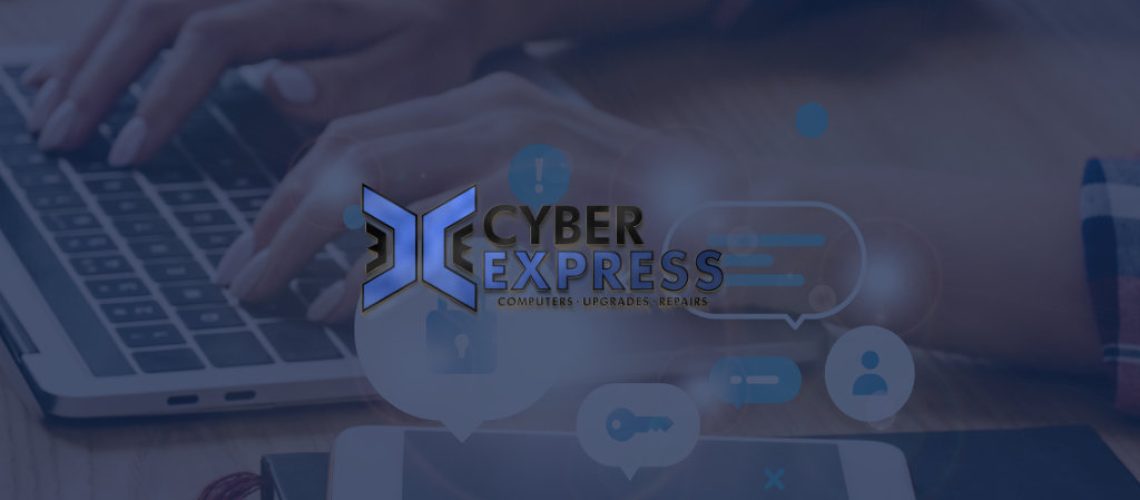Today, digital connectivity has become a prerequisite for business growth and success. Technology makes it possible for businesses to expand seamlessly into new markets and offer services and products to customers in new and innovative ways. While digital solutions can grant businesses that all important competitive edge, operating in the online realm comes with a distinct set of risks that businesses must pre-emptively address.
We are of course referring to cyber threats, which come in a variety of forms, and seek to threaten the confidentiality of corporate information and the integrity of IT systems. Combatting these threats requires a tactical approach, combining policies, best practices and technologies, to construct what’s often referred to as a “cybersecurity strategy,” or a “cybersecurity framework.”
Recognizing the threats your business faces is also an important foundational step that will empower you to cyber-deploy protections in a considered calculated manner. Here’s a short rundown on some of the most common cyber threats:
Malware
Malware refers to a wide range of software programs designed to damage, disrupt, or gain unauthorized access to an IT system. Malware comes in a variety of formats, each designed for a specific purpose and possessing a unique set of characteristics and behaviors. Common examples you may have heard of include viruses, ransomware, spyware, trojans, and worms. These hostile programs carry out a range of disruptive and damaging actions, including the ability to encrypt files for ransom, disable or damage systems, steal or compromise data, and spy on user activity and keyboard inputs.
Phishing Attacks
Phishing attacks are the most common cyber threat type facing businesses, accounting for 36% of all data breaches, according to a 2023 report by Verizon. Phishing attacks typically use deception to convince users to surrender sensitive information, grant the attacker access to a critical system, or execute a payment on fraudulent terms. While the majority of phishing attacks are carried out by email, a range of other mediums can be used, including text messaging, instant messaging services, social media, and telephone.
Password Hacking Attacks
While malware and phishing attacks are often used to acquire account credentials, attackers also use a range of automated tools which guess passwords until the correct combination is found. Rainbow table attacks, credential stuffing, dictionary attacks, and brute force attacks are just some of the varied methods used to infiltrate user accounts and steal the valuable information within. The use of long and complex passwords can minimize the chance of such attacks being successful.
Man-in-the-Middle Attacks (MITM)
In a man-in-the-middle attack, an attacker positions themselves between two or more communicating parties. Once in position, they may monitor the communication to capture sensitive information, or manipulate the interaction to direct users to a malicious site or prompt the disclosure of sensitive information. MITM attacks can take place in various contexts, including Wi-Fi connections, public internet networks, and email communications. The attacks often take advantage of device vulnerabilities, weaknesses in network protocols, encryption weaknesses, and insecure configurations.
Insider Threats
Not all digital threats are external in origin. Insider threats arise when personnel within an organization jeopardize the security and integrity of digital systems, either accidentally or for malicious aims. Insider threats can vary widely in nature, from accidentally leaking sensitive business information and falling prey to phishing to hostile espionage and system sabotage.
Build an Invulnerable Digital Fortress – 5 Vital Cybersecurity Technologies
Building an effective cybersecurity framework requires the multi-layered application of complementary security technologies. This will ensure your IT system is protected against every angle of attack, minimizing the risks facing your data across your digital ecosystem. Here are 5 cybersecurity technologies you should consider for your business in 2024:
Intrusion Detection and Prevention Systems (IDPS)
Intrusion detection and prevention systems are end-to-end, integrated security platforms capable of detecting, alerting on, and responding to security events as they unfold. IDPS uses multiple data streams, including network traffic analysis and system activity logs, to identify anomalous signals, behaviors, and threat signatures that indicate a potential security incident.
One a threat is positively identified, IDPS can initiate a range of actions to neutralize or contain it, including (but not limited to) blocking malicious traffic, terminating suspicious connections, or applying access control policies to obstruct unauthorized access attempts.
Encryption
Encryption is a fundamental cybersecurity technology that helps to protect data against capture and misuse by unauthorized, malicious parties. Encryption works by encoding information into an indecipherable format (converting “plaintext’ into “ciphertext”) using cryptographic algorithms. This makes the information unreadable, and therefore of no use to an external onlooker.
Encryption can be applied in various settings within an IT system. Data can be encrypted at rest, to protect information stored within servers, databases, endpoint devices, and cloud systems. It can also be applied to data in transit, to safeguard information sent via email, instant messaging, and across networks.
Offering robust protection against numerous threats, encryption remains one of the most effective cybersecurity protections available. Ensure encryption forms part of your digital defense armory, alongside complementary measures such as access controls and multi-factor authentication.
Endpoint Antivirus
Endpoint antivirus solutions perform a crucial cybersecurity function by protecting endpoint devices against infection from various types of malware. Endpoint devices, such as desktops, laptops, servers, and mobile devices, are common entry points for malware. This makes the role of endpoint antivirus all the more pivotal, as threat detection at the initial intrusion stage allows a swift response to be implemented, protecting the network against wider compromise.
Modern endpoint antivirus solutions combine traditional, signature-based detection methods with more advanced heuristic-based techniques. This allows both known and previously unseen malware threats to be detected and blocked. The systems subject files, processes, and network activity to intense scrutiny, looking for threat signatures, as well as anomalous behavior that could indicate an imminent malware execution threat.
Offering centralized management, 24/7 monitoring, and real-time threat response automation, endpoint antivirus software serves a critical function within a cybersecurity strategy.
Data Backup Solutions
Data backup solutions provide an essential form of redundancy, ensuring that important information and business critical systems can be swiftly recovered following a data breach or cyberattack. Backup systems work by regularly and systematically copying critical data to a secure secondary storage location, such as on-premises backup servers, cloud storage platforms, or offline storage media.
A secure and effective data backup solution should feature the following:
- Encryption: Encryption applied during transmission and storage safeguards data against malicious interception and unauthorized access.
- Frequent Backups: Backups should be initiated frequently to ensure that data can easily be recovered to a recent point in time. Backups should be performed daily, hourly, or even in real-time, in accordance with the data’s criticality and your business’s information protection policies.
- 2 Copies at a minimum: Data backup best practice dictates that at least two segregated copies of data should be created in addition to the original. This provides added redundancy, as should one recovery mechanism fail, the secondary system is able to step in and save the day.
- Incremental Backup Capabilities: Rather than creating a fresh copy of the source file on a regular basis, an incremental backup only copies changes made since the previous backup. This ensures backup storage resources are used efficiently which reduces storage costs and saves time in the backup process.
Security Information and Event Management (SIEM)
Security information and event management (SIEM) platforms monitor, consolidate, and analyze security event information from a range of sources, including network devices, servers, endpoints, applications, databases, and security appliances.
By bringing this information together, SIEM solutions are able to apply correlation rules, heuristics, and threat intelligence to spot trends and patterns across separate systems that might indicate a developing security threat. Upon detection of an active threat, SIEM can trigger alerts that notify security teams. Alternatively, automated response workflows can be set up to provide fast-acting and vigorous threat containment actions.
SIEM platforms offer advanced, next-gen threat reporting and response, and support integration with other security technologies such as endpoint detection and response (EDR) systems and intrusion detection and prevention systems (IDPS). Consider including SIEM in your security strategy for uprated protection that covers your entire network.
Final Thoughts
Navigating the realm of cybersecurity is an ongoing concern, demanding vigilance and a readiness to adapt to emerging risks. By incorporating these solutions into a broader framework of protections, you’ll create an effective defensive posture that protects your business against an array of dynamic threats.
Cyber Express – Responsive IT Support and Strategic Solutions for Ohio Businesses
From our home in Boardman, Cyber Express provides IT support, technology management, cybersecurity services, and class-leading solutions to businesses across Youngstown, Mahoning County, and the wider region. Our approach to IT support ensures our clients enjoy a proactive, friendly, and tailored service that addresses key challenges and delivers growth-enabling technology. Get in touch today to discuss your IT support or computer repair needs. Our friendly team can’t wait to take your call.


